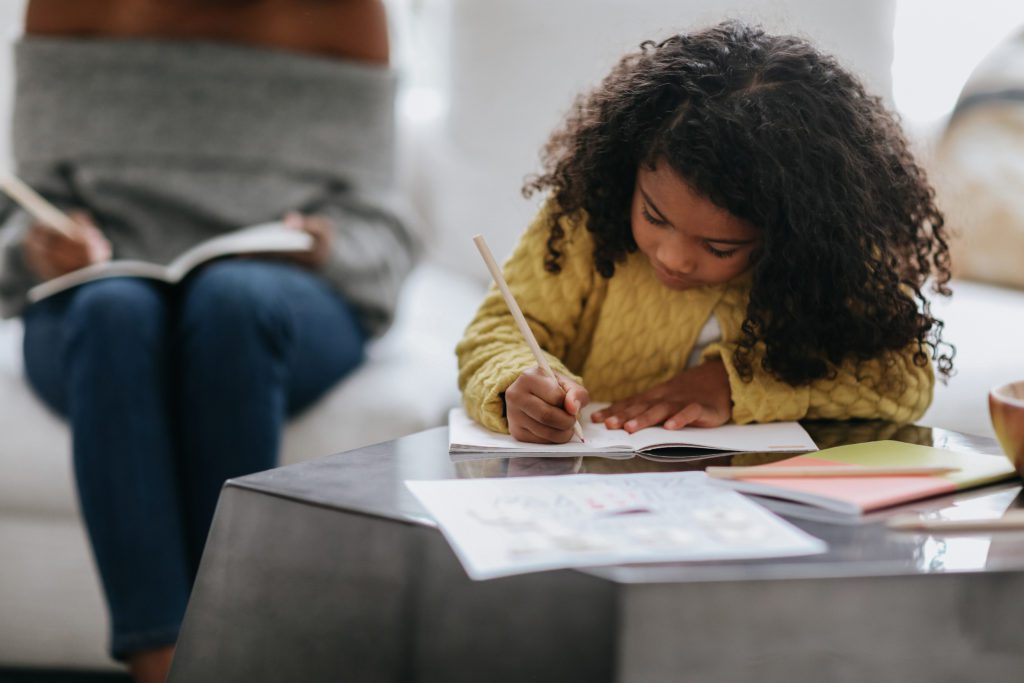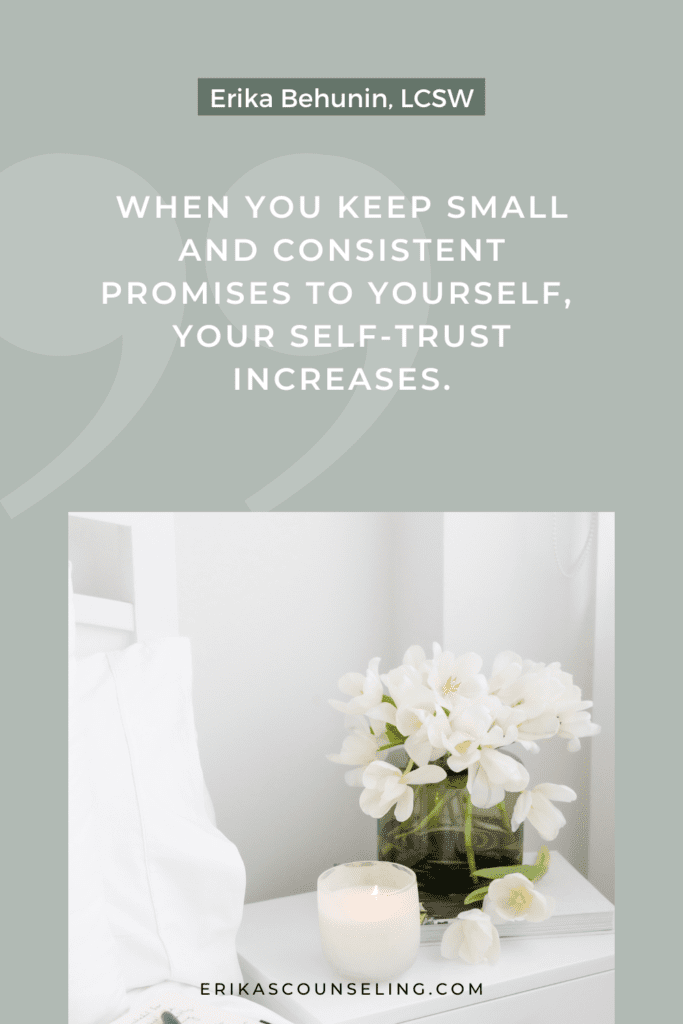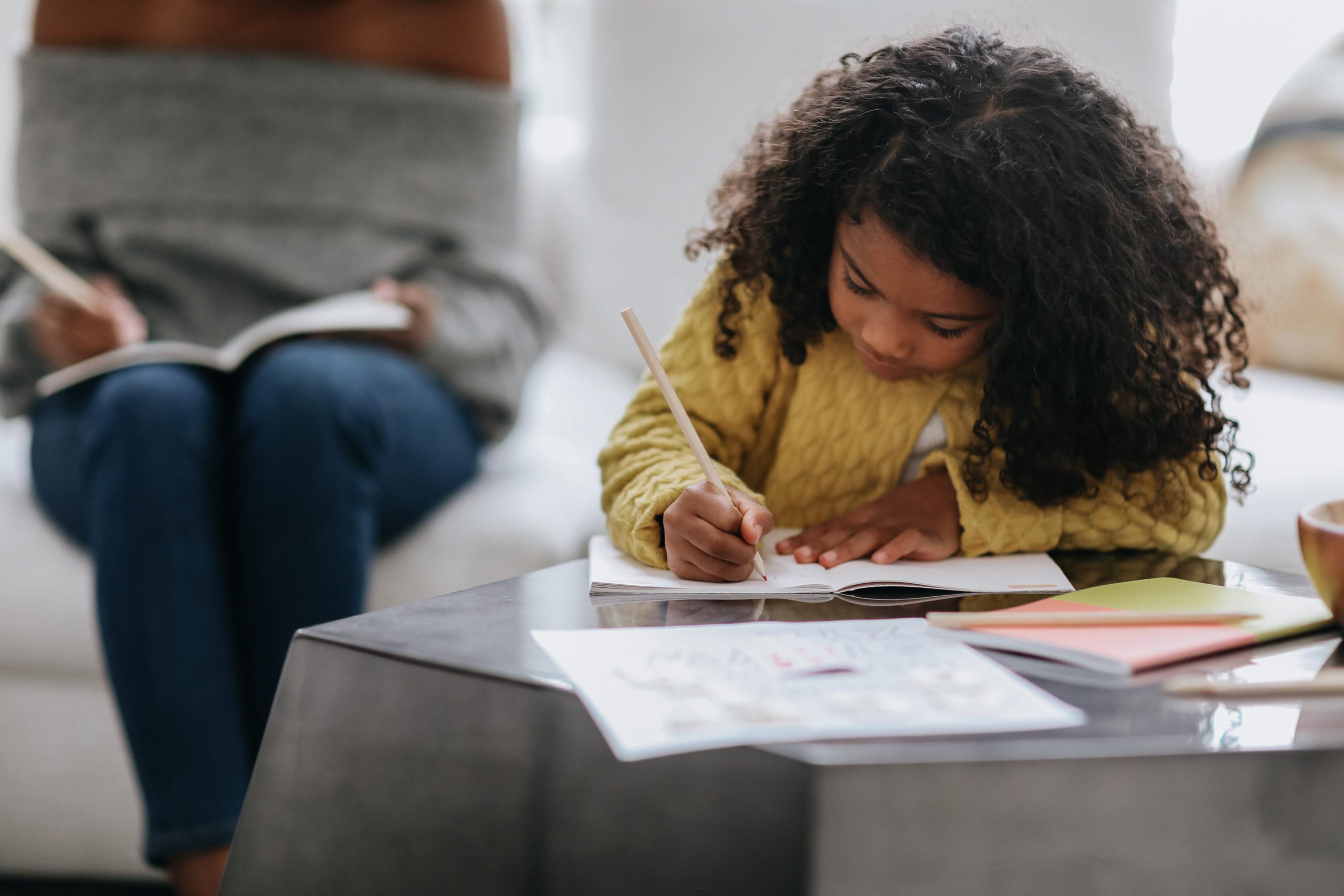It is that time of year again. Fall is in the air, back to school supplies line the aisles, and many parents are anxiously anticipating the first day of school.
However, there are those parents that are dreading the anxiety that also accompanies the start of a new school year, perhaps wanting to hold onto summer days a bit longer free of the anxiety ridden evenings and mornings.

If you have a kiddo that gets anxious with going back to school, hence you notice a heightened anxiety of your own, know you are not alone. Of course with any change or new beginning anxious feelings are a likely companion. It is normal and even healthy to experience some anxiety with new beginnings or change in routines. However, you want the tools to help your child and yourself know how to manage if anxiety decides to run the show.

So here we go! Four tips to help your child with back to school anxiety:
1. Back To Basics:
Work on creating a proper sleep schedule prior to the beginning of school. Quality sleep makes a huge difference when it comes to anxiety. As well as being mindful of proper nutrition and the role nutrition plays in anxiety management.
Provide adequate information about your child’s school, who their teacher will be, or are there any friends they could connect with that will be in their class. Is it possible to tour the school or meet the teacher before the first day? Anxiety increases with the unknown. Providing general information of what to expect can be very helpful in managing the uncertainty of a new year.
Practice (particularly for younger kiddos) how you will say goodbye and stick with the plan. Have a plan in place for drop off and pick up so your child knows what to expect.
Finally, if your child is nervous about lunch or recess (unstructured time at school can be challenging for some) role-play various scenarios. Perhaps, you could help your child know what to say at lunch if they didn’t have anybody to sit with. How could they handle tricky situations at recess? Who could they turn to for help? This may seem common sense and simple to you, however, remember your child may not have learned these problem solving skills yet.

2) Educate Your Child About Anxiety:
Anxiety does not only affect the mind. It impacts the whole body. The physical symptoms that accompany anxiety can feel very scary to a child and to adults. Having the correct information about anxiety and how it functions in the body can be very empowering.
First, normalize anxiety! It can happen to anyone, no matter who you are, how old you are, how much money you have, where you live, where you go to school, where you work …. and then EDUCATE.
Example:
“Your brain is amazing. There is a part of your brain that is there to keep you safe and look out for danger. It is designed to protect you. This part of your brain acts like an alarm system. It is called the amygdala. It is actually really small, about the size of an almond. Sometimes you really need this protection part of your brain and sometimes this alarm goes off when there is no REAL danger present. Sometimes when this alarm goes off you may feel certain sensations in your body that feel scary. For example, have you ever noticed when you feel afraid your heart starts racing faster, you may have a difficult time breathing, maybe you get butterflies in your tummy, you may get sweaty or need to use the bathroom. Sometimes you may feel like running away or if feels like you can’t think clearly. These are some normal symptoms of anxiety. These feelings feel really scary but they cannot hurt you.”
So the goal is to befriend this part of your brain. I call it the worry part. We all have different “Parts” of ourself. We have a brave part, we have a curious part, a worry part and so on. For some it is helpful to name their worry part … some have named their worry part, Jack or Sally .. if this is helpful to your child allow them to come up with a name for their worry part (or their amygdala). It can even be a silly name!
It is helpful to imagine your worry part like a fire alarm in your home. It is there to protect you and warn you of danger. However, sometimes it goes off and it is a false alarm. Perhaps, you burnt popcorn and off goes the alarm. The false alarms are annoying and loud. However, you still would rather have the false alarm than have no alarm at all to warn you of real danger. Anxiety is tricky because your amygdala doesn’t know the difference between REAL and IMAGINED danger. Just like a fire alarm does not know the difference between a real fire and burnt popcorn.
The goal is not to get rid of worry completely (that will never happen!) The goal is to change the way you respond when it does show up.
For example, “Oh hey worry, there you are. Good to see you. I know you are just doing your job, but I’ve got this.”
Changing your child’s relationship with anxiety takes time and practice. Offer learning opportunities when your child is in their “thinking” brain and help them identify when their “worry part” is making a grand entrance and begging for attention.
3. Empower Your Child That They Can Do Hard Things:
This just might be my favorite tip! Worry loves certainty and predictability. As much as we as parents would give anything to provide certainty and safety for our children, we know the reality is that we cannot. We know that life is uncertain and unpredictable. So what a better gift we could give them than to help them tolerate uncertainty. To cultivate the superpower of tolerating discomfort. Of building resiliency when life throws a curve ball. Of developing the inner resources to manage the bumps in the road. We cannot do this by rescuing our children from every fear. From creating a routine that solves all of their problems or attempts to eliminate all of their discomfort. Just as we don’t teach kids to swim by keeping kids out of the water. We don’t teach kids to tolerate uncertainty by withholding them from difficult situations.
SKILL BUILDING TIP:
A great way to bring awareness and value to tolerating uncertainty is creating a family ritual of discussing at the end of the day what each family member did that day that involved some degree of uncertainty. How did family members manage situations that did not go as planned?
Being flexible is an invaluable skill that can be taught.
“What unexpected thing happened to you today? And how did you manage it?”
MANTRAS:
“I know you are a kid who can do hard things.”
“You can be scared and brave.”
“This is a feeling and I know feelings pass.”
“I can handle not knowing how things will turn out.”

4. Learn To Tolerate Your Own Discomfort:
I saved the best for last. Maybe one of the most challenging and most important. Studies have shown that outcomes are much more effective when treating children with anxiety disorders when the whole family system is involved in the treatment. Many kiddos who struggle with anxiety also have a parent(s) who also has anxiety. Children of parents who are diagnosed with anxiety disorders are seven times more likely to develop an anxiety disorder themselves (Lyons, Lynn: How to Work With Anxious Families). You are an integral component in helping your child live a life where anxiety doesn’t get to make their or your family’s decisions. Anxiety likes to show up and run the show. How many times can you recall readjusting your schedule, or making sure everything was just right in order to try to prevent your child’s anxiety from surfacing or spiraling out of control? Because in the short term it probably helps. In the short term avoidance works, however, in the long run avoidance fuels anxiety, closes doors, and drains the joy out of life.
So what can you do? First, learn to manage and adjust (if needed) your relationship to anxiety. Evaluate your responses to your child’s anxiety … how does it make you feel, how do you react, are you perhaps in anyway fueling or innocently maintaining your child’s anxiety? Learning to tolerate your own discomfort to your child’s emotions is crucial. Recognize your child is allowed to feel how they feel. You are there to guide them and be a safe, encouraging landing place. This piece involves self-care and awareness. You cannot pour from an empty cup.
Think of anxiety along a continuum, some anxiety is necessary and actually important. However, if you move along the continuum and find that anxiety is taking up a great deal of you and your child’s day and is consistently impacting daily activities then it may be time to seek professional help.
Here is to a new school year filled with uncertainty, beautiful growth and possibility!
Remember there is help and there is hope.
Erika
Posts for educational purposes only. Not a replacement for therapy or professional help.
